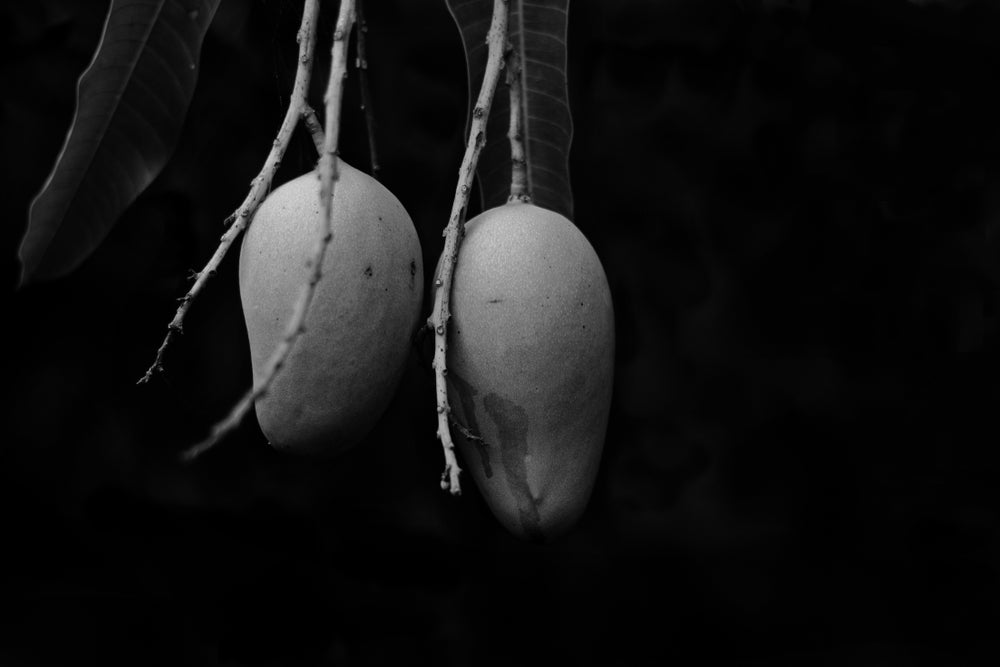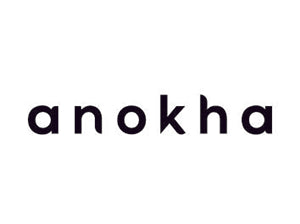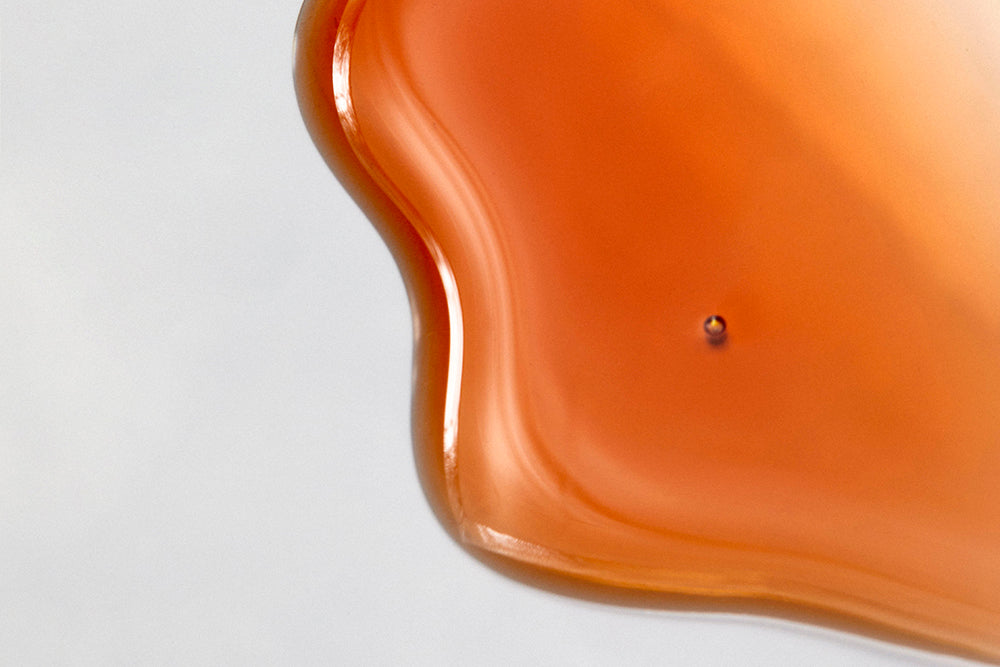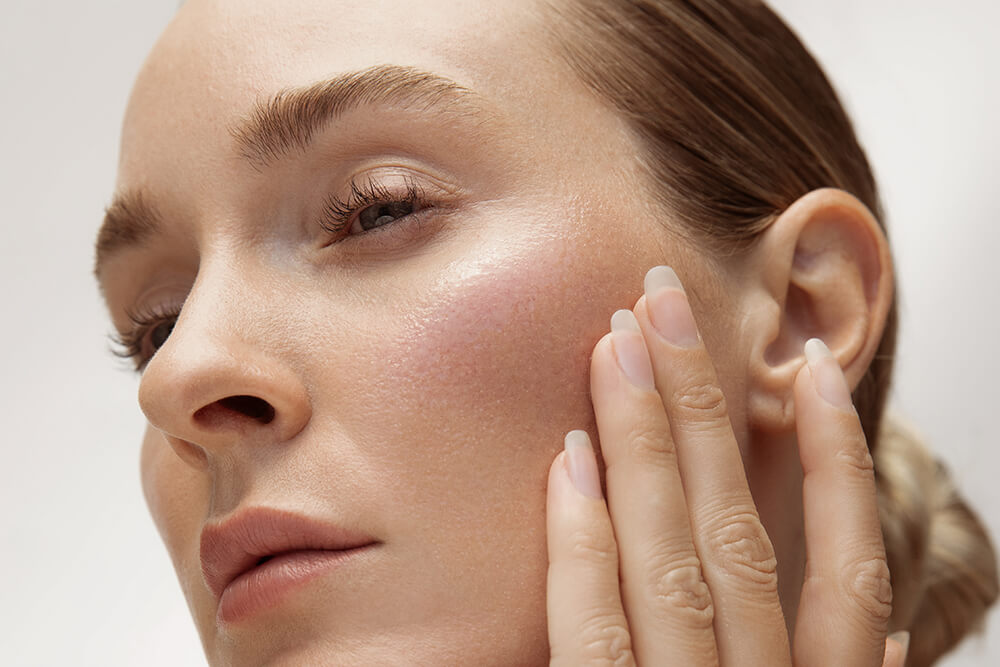
ingredient focus: mango

the bottom line
From flavor to color to scent, the mango is an undeniably happy fruit. We love them as much as part of our beauty routines as we do on our plates. Not sold on this sweet “King of Fruits”? Read on for science behind why you should put food on your face.
first layer: the history of the mango
The mango is one of the most important edible plants of the family Anacardiaceae, playing an important role in agricultural and pharmaceutical fields for over 4000 years. The mango tree originates from the current regions of Bangladesh, Myanmar, India, and Indonesia. As a result of its processing, large amounts of peels and seeds are generated and typically discarded, representing a potential source for upcycled ingredients.
Mangoes have also been associated with faith and prosperity since the rise of Buddhism, and legend has it that the Buddha himself was presented with a mango grove in order to rest under the shade of the trees. The Hindu god Ganesha often totes a ripe mango as a symbol of attainment to represent the potential perfection of his devotees, while mango blossoms are used in the worship of the Hindu goddess Saraswati. The mango tree was also associated with the god of love, Manmatha, and its blossoms were considered to be the god’s arrows by the Hindu Nanda Kings. Sweet, indeed.
second layer: the science of mango
While most people know the mango for its sweet fruit, its seed, leaves, and peel hold treasures, too.
The mango seed’s kernel contains up to 50% water, and therefore must be dried rapidly following harvest to limit the growth of microorganisms. To add to this challenge, the fruit is harvested in South Asia during the monsoon season – hardly an easy task for the sake of beauty. The seed of the mango fruit is composed of 9-13% butter and is regarded as a valuable cosmetic ingredient composed of fatty acids, polyphenols*, and vitamins. The fatty acid profile consists of oleic (41%), stearic (40%), palmitic (9%), linoleic (7%), and arachidic (3%) acids, while the polyphenols contain large amounts of gallic acid. Gallic acid and its derivatives have been shown to act as antimicrobial agents, with activity against the bacteria Propionibacterium acnes, Staphylococcus aureus, and Staphylococcus epidermidis.
The primary bioactive components of mango peel include polyphenols, carotenoids, and organic acids. The extract of both mango peel and mango leaves demonstrates significant anti-collagenase*, anti-elastase*, anti-hyaluronidase*, and anti-tyrosinase* effects when compared to controls. The extract has also been shown to attenuate the effects of matrix metalloproteinases (MMP’s)*.
third layer: mango in skin care
With so much bioactivity within the components of the mango, its many skin benefits become evident:
- emollient: cream composed of mango butter has been shown to act as an emollient, replenishing moisture.
- hydration: the fatty acids from the seed’s kernel provide hydration and moisturization of the skin. By inhibiting hyaluronidase, mango increases the level of hyaluronic acid within the skin to assist in retaining moisture within the skin.
- antioxidant: the phytosterols of mango contribute to its antioxidant activity, with free radical scavenging effects comparable to those of vitamin E and superior to vitamin C.
- skin barrier repair: the fatty acids within the seed’s kernel act to strengthen the skin’s barrier.
- anti-acne: antibacterial activity derived from gallic acid has been shown to be effective in the treatment of acne and its associated inflammation. One study evaluated the effects of mango seed kernels and noted free-radical scavenging as well as anti-inflammatory activity with the potential to relieve the effects of acne vulgaris.
- skin brightening: by inhibiting tyrosinase, mango helps to brighten skin by blocking a step in the pathway of skin pigmentation.
- anti-aging: collagenase and elastase are responsible for the integrity of the dermis of the skin and its elasticity. Both components decrease with aging, and their inhibition by mango seed contributes to a more rejuvenated complexion.
fourth layer: how we do it
Classical Sanskrit poet Kalidasa is said to have sung the praises of mango. We too sing the praises of this wonderful fruit by including it as a key component in our rosehip replenishing balm. Created as a natural scar treatment especially for Dr. Naidu's patients who required a gentle yet effective ointment for their incisions following surgery, this glossy rosehip balm boasts a mélange of mango butter and highly soothing botanical oils. Renew, replenish, radiate; repeat.
It's a beauty balm for targeted renewal.
All this and more at www.anokhaskincare.com .
xx
anokha
references:
- https://en.wikipedia.org/wiki/Mango
- Dhara R, Bhattacharyya DK, Ghosh M. Analysis of sterol and other components present in unsaponifiable matters of mahua, sal and mango kernel oil. J Oleo Science 2010; 59(4): 169-176.
- Janes D, Kocevar Glavac N (eds.). Modern Cosmetics, Ingredients of Natural Origin, a Scientific View, Volume 1. 2018. Velenje, Slovenia: Sirimo dobro besedo d.o.o.
- Mandawgade SD, Patravale VB. Formulation and evaluation of exotic fat-based cosmeceuticals for skin repair. Ind J Pharm Sci 2008; 70(4): 539-542.
- Poljsak N, Kreft S, Kocevar Glavac N. Vegetable butters and oils in skin wound healing: Scientific evidence for new opportunities in dermatology. Phyto Res 2020; 34: 254-269.
- Poomanee W, Chaiyana W, Mueller M, et al. In vitro investigation of anti-acne properties of Mangifera indica kernel extract and its mechanism of action against Propionibacterium acnes. Anaerobe 2018; 52: 64-74.
- Poomanee W, Khunkitti W, Chaiyana W, et al. Multifunctional biological properties and phytochemical constituents of Mangifera indica seed kernel extract for preventing skin aging. Toxicol Res 2021; 37: 459-472.
- Garcia-Villegas A, Fernandez-Ochoa A, Rojas-Garcia A, et al. The potential of Mangifera indica L. peel extract to be revalued in cosmetic applications. Antioxidants 2023; 12: 1892-1923.
- Ng SY, Eh Suk VR, Gew LT. Plant polyphenols as green sunscreen ingredients: A systematic review. J Cosmetol Dermatol 2022; 21: 5409-5444.
- Ochocka R, Hering A, Stefanowicz-Hajduk J, Cal K, Baranska H. The effect of mangiferin on skin: penetration, permeation and inhibition of ECM enzymes. PLoS ONE 2017; 12, e0181542.
- El-Nashar HAS, El-labbad EM, Al-Azzawi MA, Ashmawy NS. A new xanthone glycoside from Mangifera indica: physicochemical properties and in vitro anti-skin aging activities. Molecules 2022; 27: 2609-2620.
*definitions:
collagenase: an enzyme that breaks the peptide bonds in collagen
elastase: a class of enzymes that cleaves peptides in elastin, among many other proteins
hyaluronidase: hyaluronidase is an enzyme that breaks down hyaluronic acid, a substance found within the body’s connective tissue, skin, and joint and eye fluids.
matrix metalloproteinase (MMP): the upregulation of MMP’s leads to degradation of the skin’s extracellular matrix, which results in sagging and aging of the skin.
polyphenols: polyphenols exhibit antioxidant, anti-inflammatory, and anti-aging activity due to their ability to scavenge free radicals and provide protection against ultraviolet rays. phenolic compounds such as flavonoids have been shown to reduce collagen degradation, enhance healing, mitigate skin hyperpigmentation, and intervene in signaling pathways associated with inflammatory reactions.
tyrosinase: tyrosinase is an enzyme which is the rate-limiting step for controlling the production of melanin
faq’s:
is mango good for skin care?
mango has many bioactive components including polyphenols, fatty acids, and vitamins which make it an excellent ingredient for skincare.
what are the benefits of mango peel on face?
mango peel extract has many benefits for skincare, including anti-elastase, anti-collagenase, anti-hyaluronidase, and anti-tyrosinase activity. these properties contribute to strengthening of the dermis, increase of hydration, and brightening of the skin.
what are the benefits of mango butter in skincare?
mango butter has many benefits in skincare, including support of the skin barrier, and anti-microbial properties which contribute to its use as an anti-acne ingredient.
does mango boost collagen?
mango peel extract has been shown to possess anti-collagenase activity. collagenase is an enzyme that breaks down collagen in the skin. by inhibiting this enzyme, mango peel extract contributes to higher levels of collagen in the skin.



leave us a comment
This site is protected by hCaptcha and the hCaptcha Privacy Policy and Terms of Service apply.